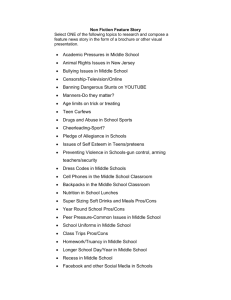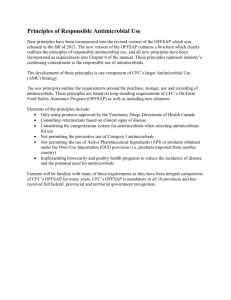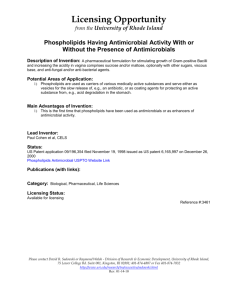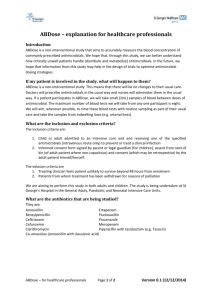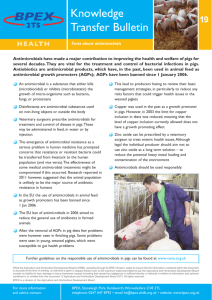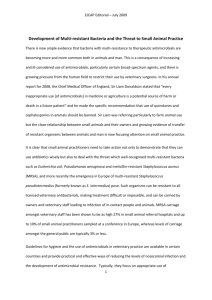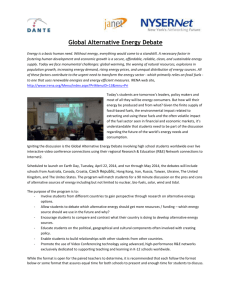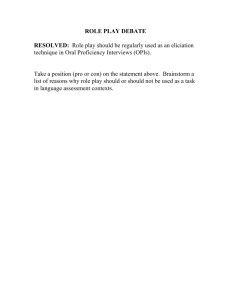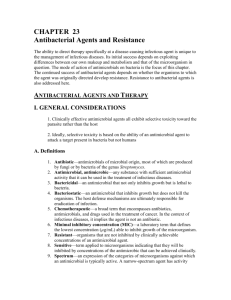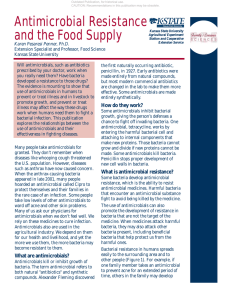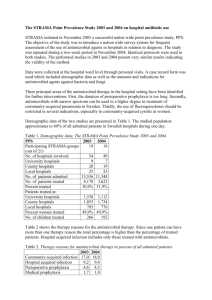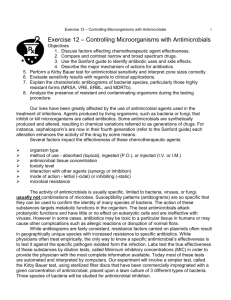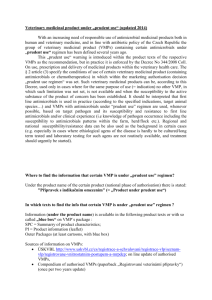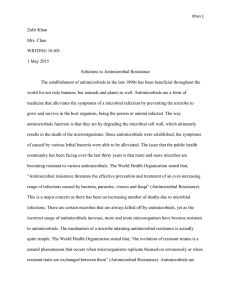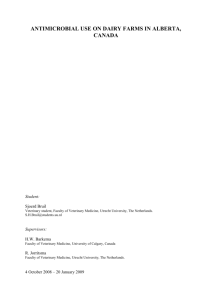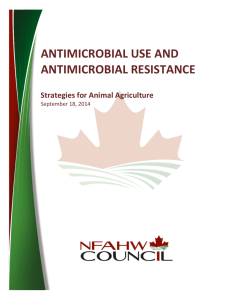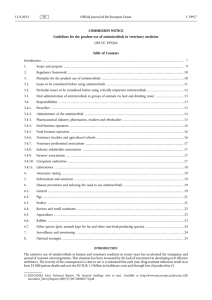Problem Two
advertisement
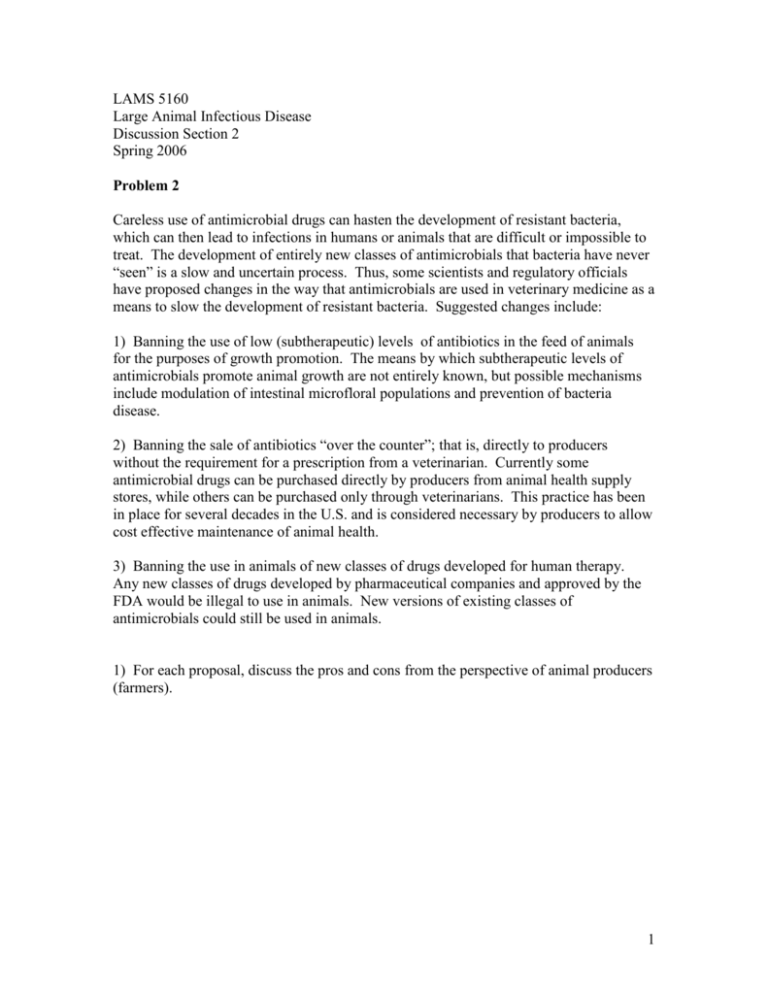
LAMS 5160 Large Animal Infectious Disease Discussion Section 2 Spring 2006 Problem 2 Careless use of antimicrobial drugs can hasten the development of resistant bacteria, which can then lead to infections in humans or animals that are difficult or impossible to treat. The development of entirely new classes of antimicrobials that bacteria have never “seen” is a slow and uncertain process. Thus, some scientists and regulatory officials have proposed changes in the way that antimicrobials are used in veterinary medicine as a means to slow the development of resistant bacteria. Suggested changes include: 1) Banning the use of low (subtherapeutic) levels of antibiotics in the feed of animals for the purposes of growth promotion. The means by which subtherapeutic levels of antimicrobials promote animal growth are not entirely known, but possible mechanisms include modulation of intestinal microfloral populations and prevention of bacteria disease. 2) Banning the sale of antibiotics “over the counter”; that is, directly to producers without the requirement for a prescription from a veterinarian. Currently some antimicrobial drugs can be purchased directly by producers from animal health supply stores, while others can be purchased only through veterinarians. This practice has been in place for several decades in the U.S. and is considered necessary by producers to allow cost effective maintenance of animal health. 3) Banning the use in animals of new classes of drugs developed for human therapy. Any new classes of drugs developed by pharmaceutical companies and approved by the FDA would be illegal to use in animals. New versions of existing classes of antimicrobials could still be used in animals. 1) For each proposal, discuss the pros and cons from the perspective of animal producers (farmers). 1 2) Discuss the pros and cons of each proposal from the perspective of veterinarians. 3) Discuss the pros and cons of each proposal from the perspective of people in the U.S. who do not own animals. 4) the pharmaceutical industry. 2
